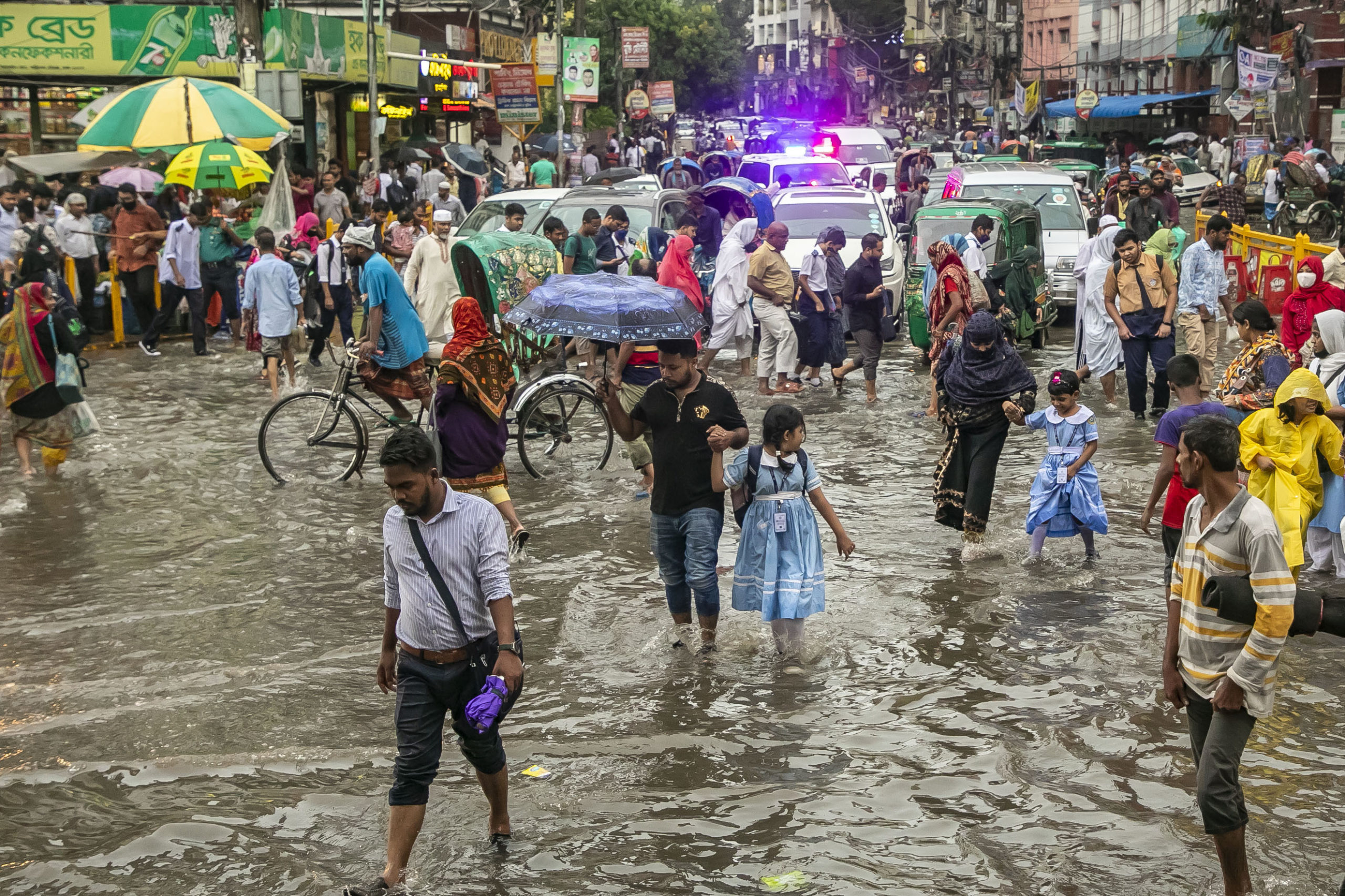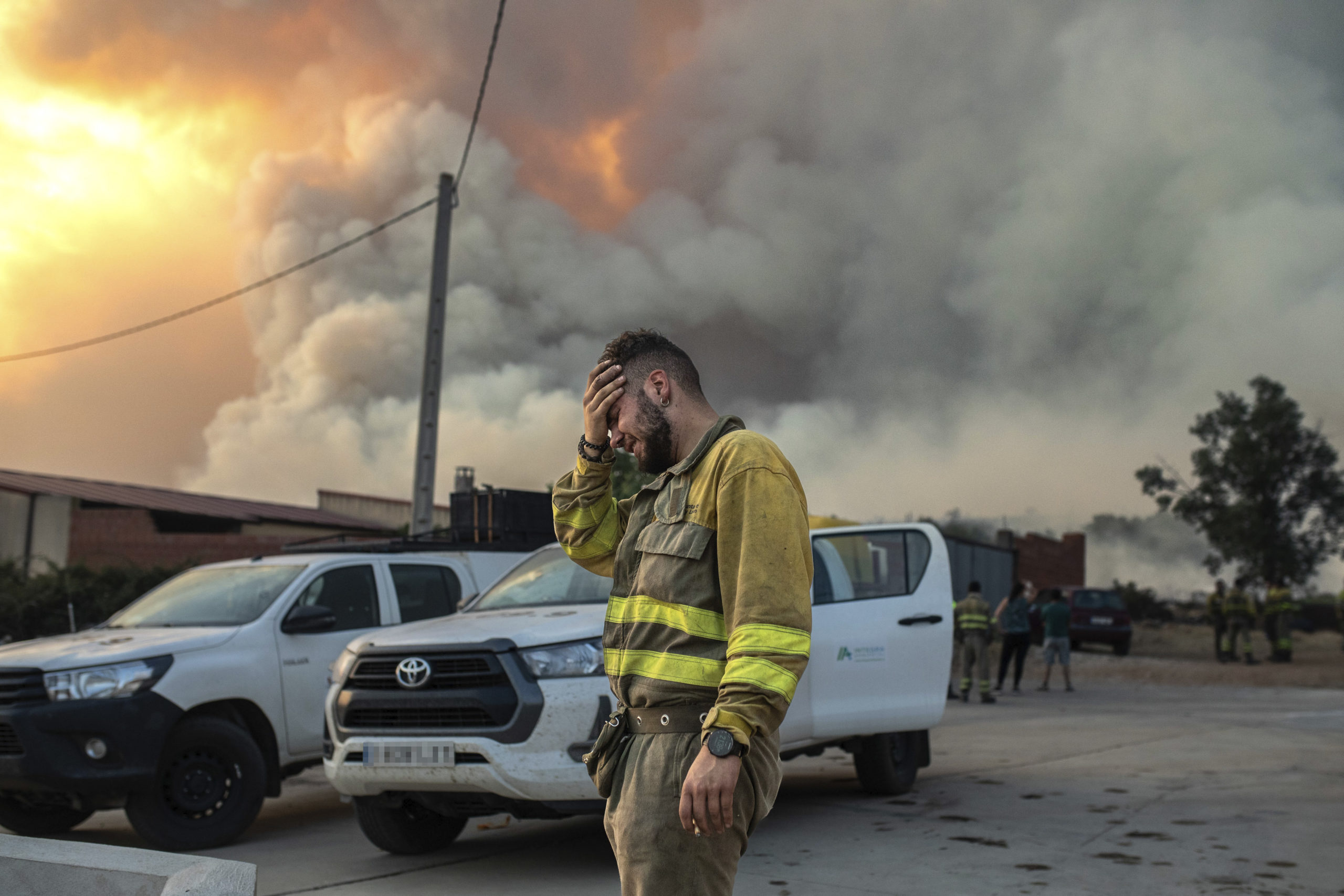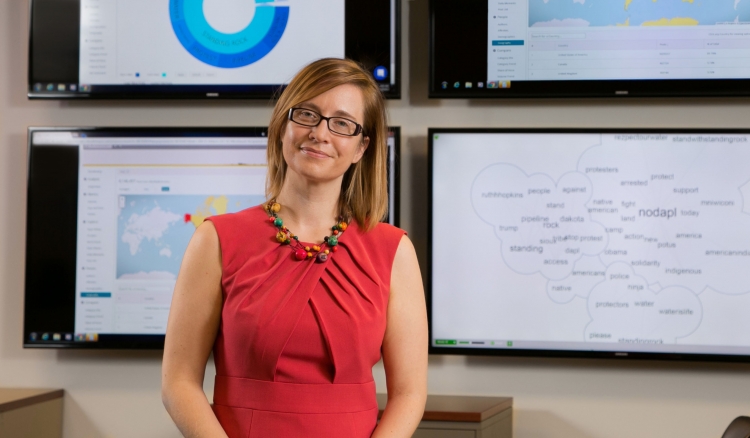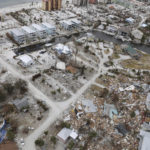After another year marked by weather extremes globally, from unprecedented heat waves in Europe that saw airport runways buckle to catastrophic flooding in Pakistan that left a third of the country underwater and nearly 1,500 dead, climate reporting is more necessary than ever.
For many news organizations, especially local ones, climate coverage is still seen as separate and distinct from other beats. But rapidly rising temperatures and a corresponding shift in weather patterns is now the context for most, if not all, news stories. Transportation reporters need to understand how climate change affects infrastructure and contributes to delays, for example. Housing reporters need to explain the intersection of flood zones and insurance rates. Even sports reporters will need to make the connection between record temperatures and game cancellations, lost practices, and heat-related injuries.
“When you look at what we cover in local news, I think what you see is that climate is in everything, and it cannot be covered any longer as a siloed beat,” says Frank Mungeam, who manages the Local Media Association’s Covering Climate Collaborative. “We need to be able to tell that kind of integrated [story] that connects the dots between climate change and the local effects that we see.”
In other words, everyone is a climate reporter now — and the crisis is urgent. A fundamental shift is needed in how news organizations cover climate issues, and that starts with training. With continued newsroom cutbacks, local news organizations are less likely to have the financial resources to hire dedicated climate journalists. All journalists need a basic understanding of the science of climate change and how the history of fossil fuel industry disinformation delayed governmental action, particularly in the United States.
It is time for journalism schools to build out climate literacy education within core reporting and editing coursework. Being climate literate means that an individual has a basic understanding of the science behind rapidly rising global temperatures, why humans burning fossil fuels is driving that change, the fact that what’s at stake is a livable planet, and what we need to do to fix it.
Yet journalism schools tend to offer training in environmental and science reporting in specialized programs, often at the graduate level, and in elective courses, like the climate change communication one that I teach at DePaul University. Many schools don’t have professors with science and environmental expertise because they see it as a niche area, and many are financially constrained from hiring new staff.
Related Posts
A shift becomes even more important when you consider that research shows that news outlets that do not have dedicated climate reporters and editors on staff made the connection between heat extremes and climate change less often than those that employ specialized climate journalists. My research shows while attention to climate change increased overall in heat wave and wildfire news coverage during a six-year time period from 2013 to 2018, a gap remained in the coverage between what I termed climate-specialist news outlets and non-specialist ones. For example, articles about heat waves during the summer of 2018 by climate-specialist news outlets discussed climate change 41 percent of the time on average. Non-climate specialist news outlets, on the other hand, mentioned climate issues in an average of just 17 percent of heat wave stories during that time period. This points to the need for a broader investment in climate literacy training for all journalists, especially those not on the climate beat.
The role journalists play in helping people understand the relationship between the world as we experience it around us and longer-term climate trends has shifted in recent decades from unwittingly perpetuating uncertainty to contextualizing contrarian viewpoints and interpreting the relationship between climate change and extreme weather. For example, in the wake of devastation caused by Hurricane Ian in Florida, the Miami Herald published a series of articles explaining how climate change is making storms like Ian stronger and fueled its growth as it barreled down on the state.
The need for the latest approach to coverage will only grow as journalism students enter the profession and throughout their careers. That’s why journalism schools have to step up.
In my own climate journalism classes I cover scientific literacy and why it is so hard to communicate about climate change. We talk about how individuals come to their beliefs about science through a mix of worldviews, social ties, and political ideology. The goal of climate communication is to not only educate about the science and impacts but also to promote action and change social norms.
One of the topics we cover is weight-of-evidence reporting. This means presenting evidence in proportion to its prevalence within the scientific literature. I do this knowing that individuals and groups seeking to deny the scientific consensus among climate scientists long exploited journalistic news values of balance and objectivity to sow public doubt — what communications scholars have called “false balance.” I have students read Inside Climate News’ groundbreaking 2015 investigation into Exxon’s disinformation campaign that spanned decades while the oil company’s own internal research had confirmed by 1982 that carbon dioxide was warming the Earth.
False balance in climate journalism is less prevalent today. The BBC, which British regulators reprimanded in 2018 for not sufficiently challenging inaccurate climate contrarian statements on-air, issued internal guidance that year stating climate denier perspectives are not needed for balance. Other news organizations have gone further. The AP stylebook, adopted by many newsrooms, states the terms climate crisis and climate emergency “are acceptable.” The Guardian’s stylebook gives preference to “global heating” over global warming.
Even so, early news reporting that overrepresented climate skeptic viewpoints have had a lasting impact. Public opinion research shows that individuals underestimate the overwhelming degree of agreement among climate scientists on the human causes of climate change — a problem news organizations will have to continue to work to overcome.
I also teach students principles for effective science communication. That can include using visuals that show the human scale of climate change, like showing people suffering from heat-related illnesses and homes washed away by flood waters. Knowing your audience and where they fall on the spectrum of climate beliefs is key to effective climate communication, as is using trusted messengers like TV weathercasters to discuss the relationship between weather and climate change.
In my classes, we also talk about the influence of climate change on weather extremes we are seeing around the globe and the field of rapid climate attribution. Attribution studies quantify the “fingerprint” of climate change on the likelihood and severity of extreme weather events — anything from heat extremes and wildfires to intense rainfall and drought conditions. I cover the historical context of U.S. political polarization on climate change and the legacy of environmental racism that has created unequal burdens of environmental hazards in communities of color. My students are likewise keen to learn how to identify climate misinformation.
In addition to a stand-alone course like mine, students in reporting boot camp courses — which many journalism schools offer — could apply investigative and data reporting techniques to local or regional climate impacts, like what theLos Angeles Times did in a groundbreaking investigation into how California undercounts the heat wave-related death toll. My DePaul colleagues Carol Marin and Don Moseley have had their investigative reporting students use data from Freedom of Information Act requests to analyze urban tree cover in Chicago, finding that twice as many trees were planted in wealthier and whiter neighborhoods on the city’s North Side than on the South Side — showing how the local government spends less money on poorer neighborhoods to blunt the effects of rising temperatures.

Kazi Salahuddin Razu/NurPhoto via AP
But these are all one-off examples. Sara Shipley Hiles, an associate professor at the Missouri School of Journalism and a Society of Environmental Journalists (SEJ) board member, thinks journalism schools need both more specialized science and environmental reporting classes and the inclusion of climate change-related assignments within the framework of existing courses.
At Missouri, she gives a science literacy guest lecture in the school’s introduction to reporting classes to help equip all of the students with a basic level of knowledge. “That lecture talks about misinformation and disinformation around science and basic science literacy for journalists [and] how important it is for them to understand that this is an issue that they’re going to encounter, whether they think that that’s their beat or not,” says Shipley Hiles. “To me, covering climate change is as basic as covering city hall.”
Beyond the ins and outs of the science and applying news-gathering skills to climate topics, Atmos magazine’s climate director Yessenia Funes, a founding member of the Uproot Project aimed at mentoring environmental journalists of color, believes that journalists would benefit from sensitivity training in order to understand the legacies of injustice that underlay present-day climate inequities.
Journalism students need this training “so that folks know how to report on issues related to racism or sexism or discrimination at-large, because it’s such a big part of climate reporting, and without that sort of sensitivity to the issues I think that that exacerbates a lot of what we’ve seen historically within environmental journalism, which is stories that create victims,” says Funes. “I think a lot about Flint and the water crisis there, and the media’s failure to shed light on the issue and shed light on the community.” The comparison is apt, according to Funes, because of how the national media were late to reporting on the crisis and downplayed the concerns of community members, a majority of whom are African American, while failing to question official narratives.
The journalists I heard from for this essay said they had gotten little to no formal training on how to report on climate change while studying for their degrees. Rather, they learned on the job. For example, Stuti Mishra, a New Delhi-based news reporter for The Independent and member of the Oxford Climate Journalism Network, says she would have liked training in how to interpret scientific findings and research data. (Disclosure: Nieman Reports is partnering with the OCJN on a series about challenges to reporting on climate change around the globe.) “I realized much later that I struggled to find climate-related stories in the initial period of my reporting on the subject because I wasn’t used to the idea of seeing things from a climate lens,” says Mishra.
When both the AP and The Washington Post made a splash in February 2022 with announcements expanding climate journalism hiring, SEJ’s Shipley Hiles saw it as a moment to invest in climate journalism education and mentorship. “There were 60 climate jobs open all at once [on the SEJ job board], and I said to myself, ‘We have got to fill this pipeline,’” she says.
Projects like Covering Climate Now and the Oxford Climate Journalism Network are working to close the climate literacy gap among journalists through online resources and workshops, as well as collaboration and content sharing across newsrooms. This includes making climate change basics accessible to working journalists with online explainers on topics like climate science 101 and regional reporting guides as well as webinars on topics like covering extreme heat and bringing climate issues into midterm elections coverage.
In 2021, the Reuters Institute for the Study of Journalism at the University of Oxford launched its climate network to change how newsrooms cover climate change. In its first year, the network included a total of 200 journalists from 82 countries in two six-month virtual training cohorts. To gauge impact the OCJN surveys member journalists asking how the training program has impacted their work. According to network manager Diego Arguedas Ortiz, they have seen improvement across the board in climate literacy metrics among participants, such as in how confident a reporter feels explaining to their audience complex issues like the Intergovernmental Panel on Climate Change (IPCC) working group process. “The single most important outcome we’ve seen is reporters challenging editors, reporters pitching new ideas, and being generally the voice of change in their newsrooms,” says Arguedas Ortiz.
Audiences are interested in more and better climate news. The science is urgent. It is time journalism schools do better at preparing future journalists for covering life on a hotter planet. Strengthening science and data literacy, as well as practice applying news gathering and verification skills to the social equity, economic, and political aspects of the climate crisis, can help the next generation of journalists and editors do their jobs better. That is good for democracy and for the planet.
Jill Hopke, Ph.D., (@jillhopke) is an associate professor of journalism at DePaul University, where she teaches climate change communication and climate journalism.





